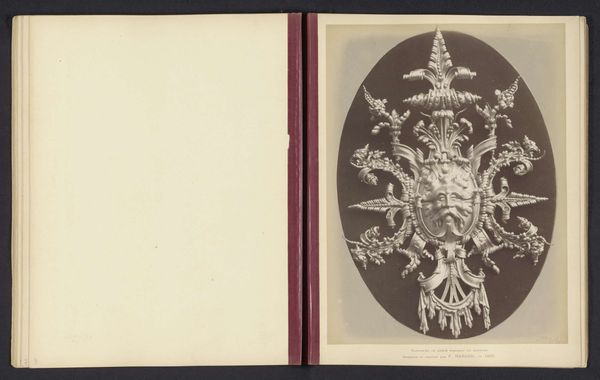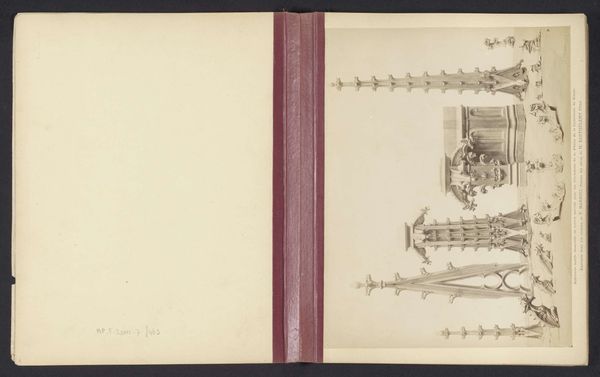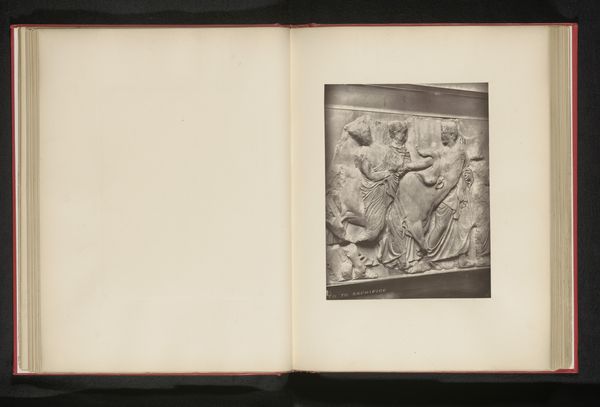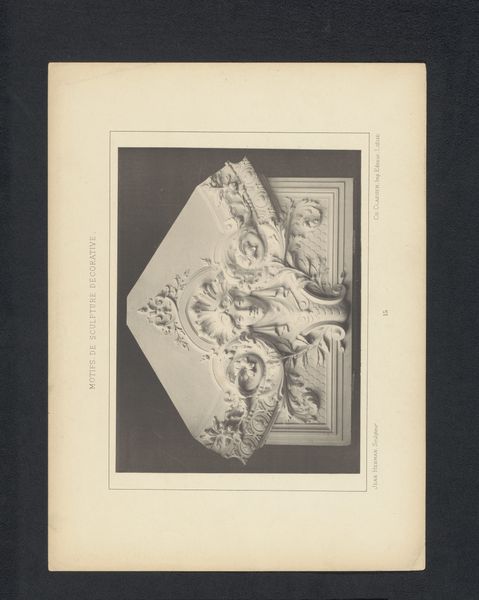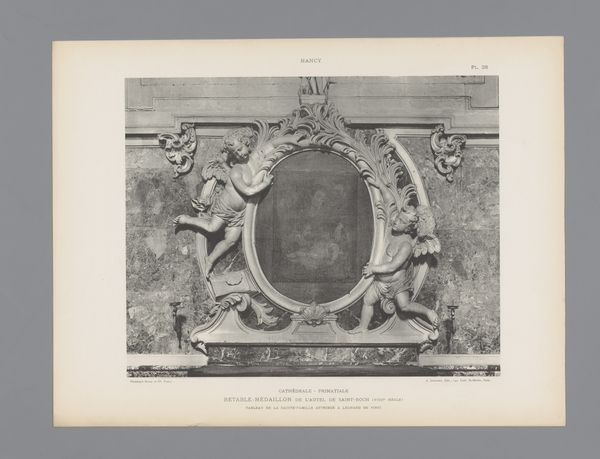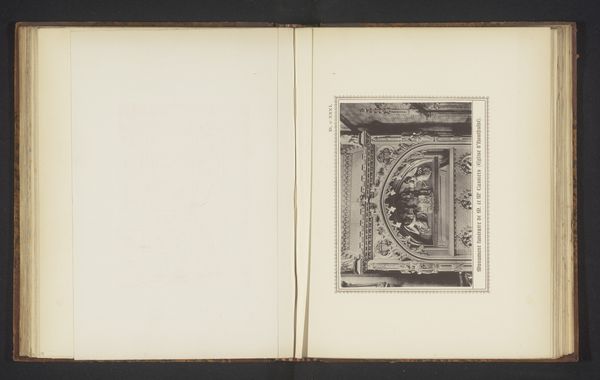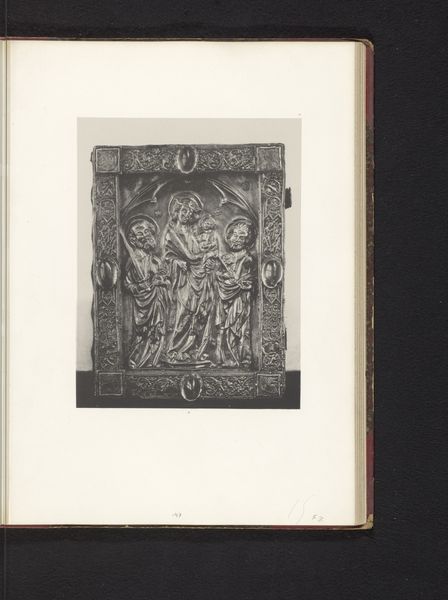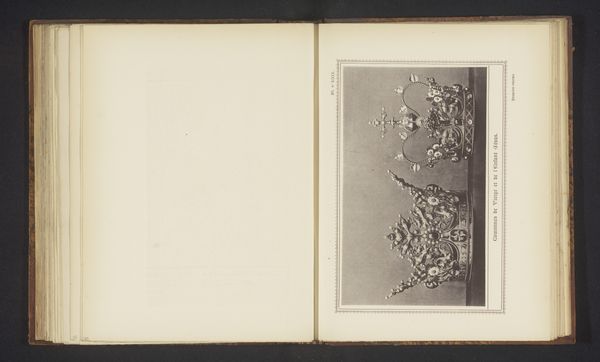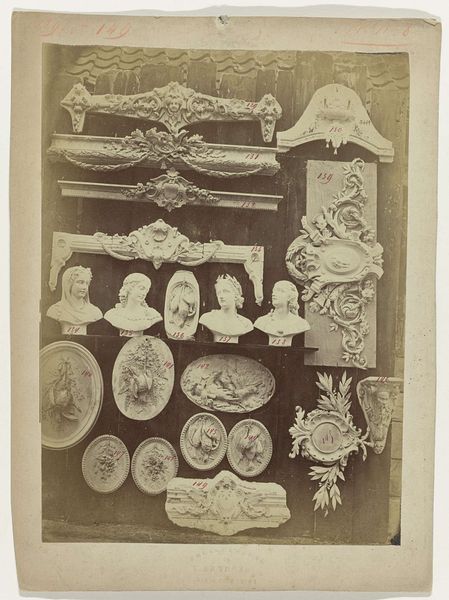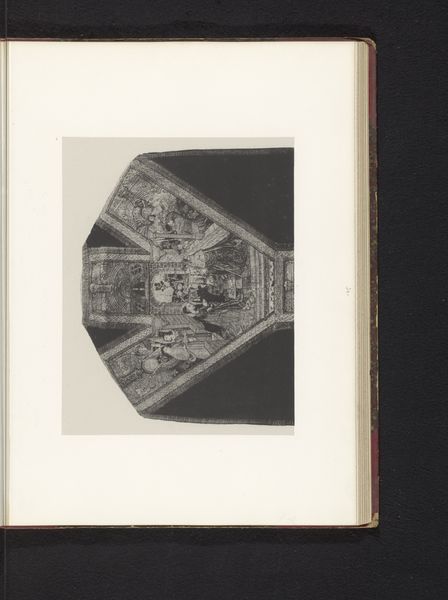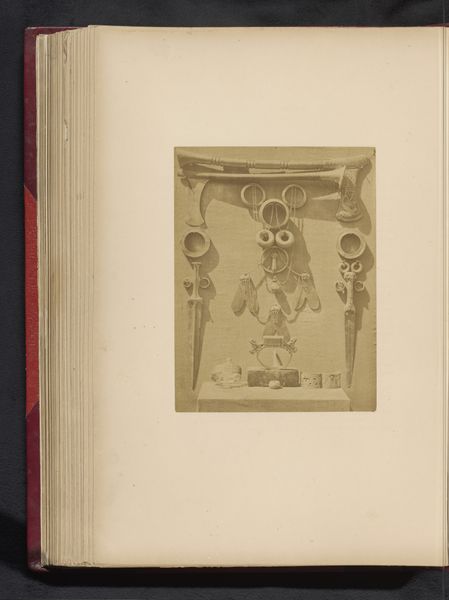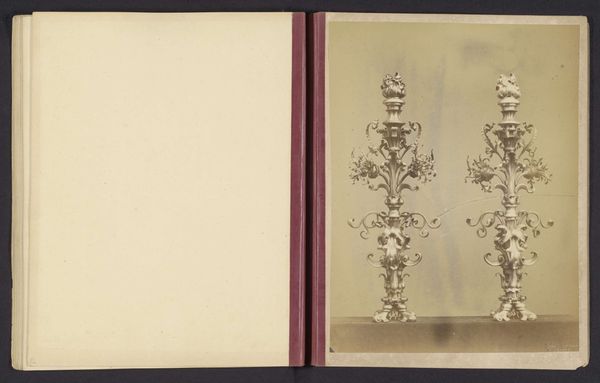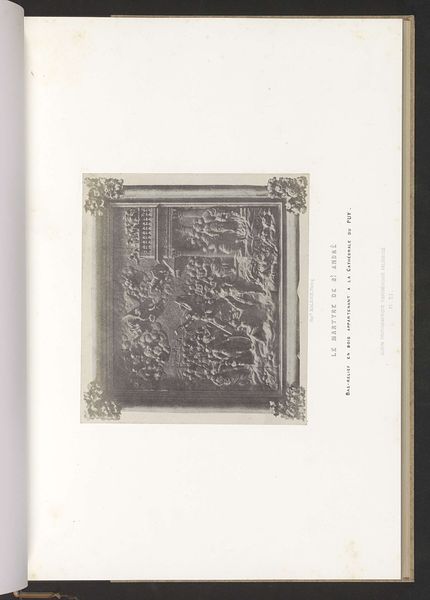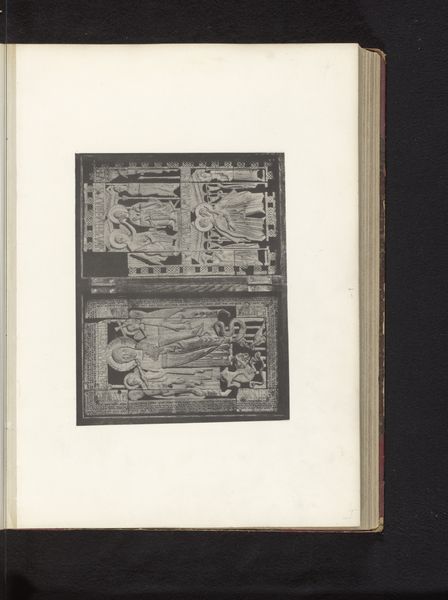
Decoratieve ornamenten in lood en ijzer, voorstellend een kapiteel en bladmotieven before 1884
0:00
0:00
metal, photography
#
metal
#
photography
#
decorative-art
Dimensions: height 267 mm, width 176 mm
Copyright: Rijks Museum: Open Domain
Editor: This photograph from before 1884, titled "Decorative ornaments in lead and iron, representing a capital and leaf motifs" by Witz et Cie, showcases these ornate architectural details. I find the contrast between the rigid geometric forms and the flowing, organic details really captivating. How do you interpret this work in the context of its time? Curator: This image offers a powerful lens through which to examine 19th-century industrialisation and its impact on artistic production and labour. These architectural fragments, frozen in photographic time, point to larger debates about class, identity, and cultural power. Think about the socio-economic context of the period: Who were these ornaments made for? How did their presence shape spaces and reinforce social hierarchies? Editor: That's a fascinating point. The details do feel very opulent, so it does seem likely that this kind of ornamentation would be for wealthy patrons. How did photography change how architectural details were disseminated and consumed? Curator: Photography played a crucial role in democratizing access to art and design. Suddenly, these motifs could be reproduced and studied far beyond their original architectural settings, influencing design trends and allowing for a broader conversation about aesthetics. But consider also the labour involved in creating both the original ornaments and the photographic reproductions. Who were the hands behind them, and what does their relative invisibility tell us about the values of the time? The lack of attribution highlights the disparities of power, and whose work and story are deemed worthy of preservation. Editor: It’s amazing to consider how much history and social commentary can be contained within one image of what seems like simple ornamentation. Curator: Indeed. By questioning whose stories are being told – and whose are being left out – we can build a more nuanced and complete picture of art's role in shaping society.
Comments
No comments
Be the first to comment and join the conversation on the ultimate creative platform.
